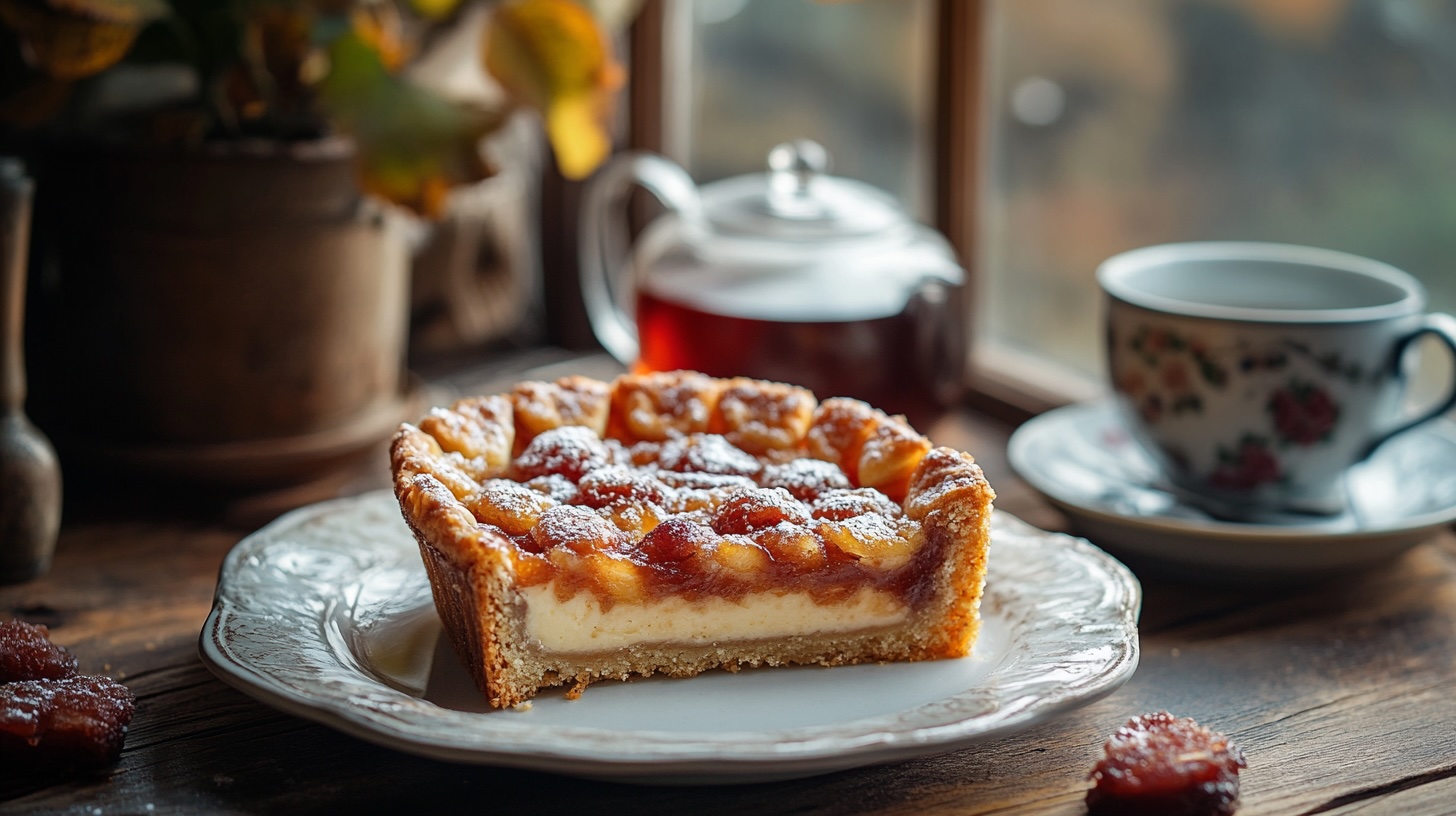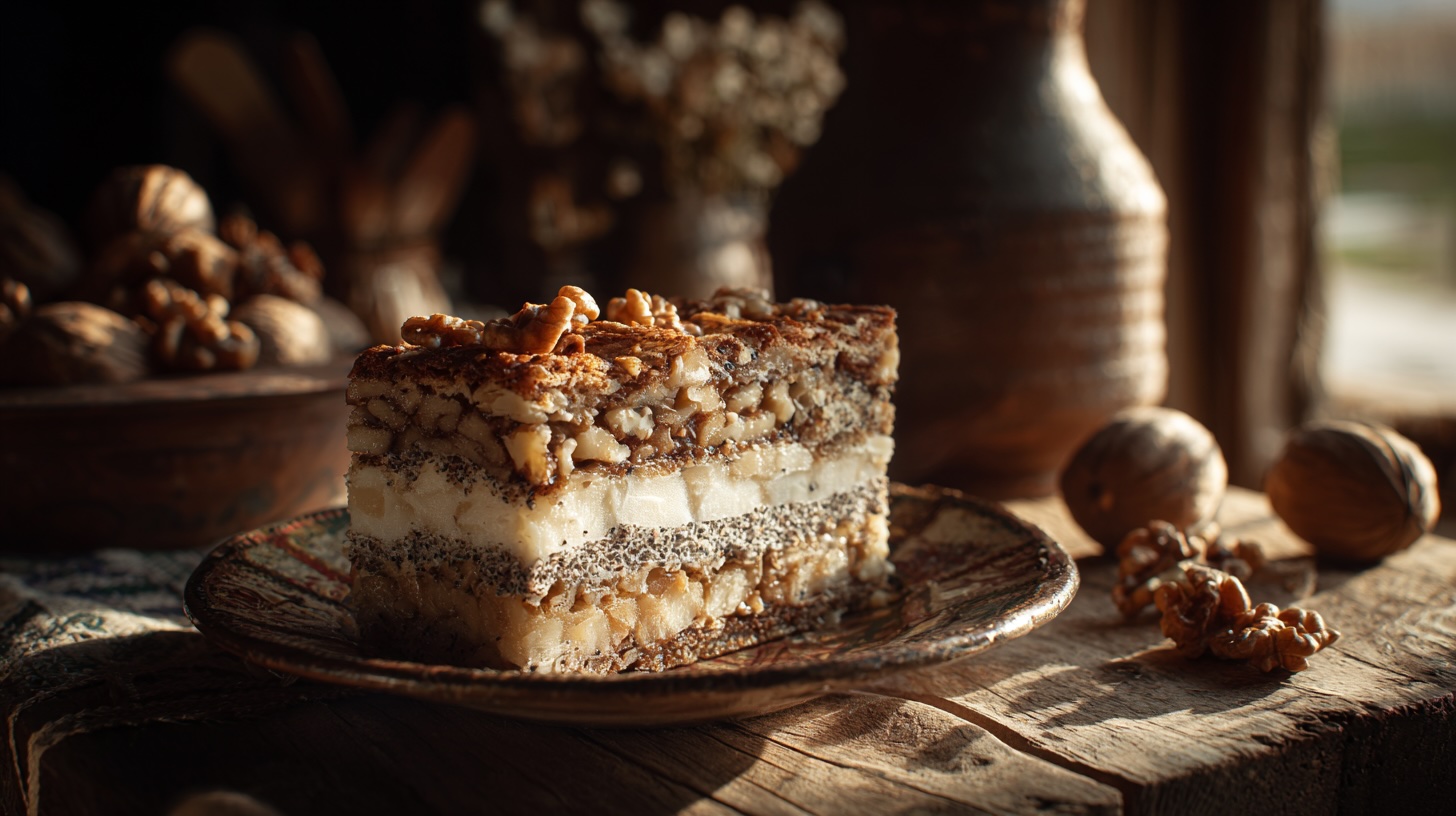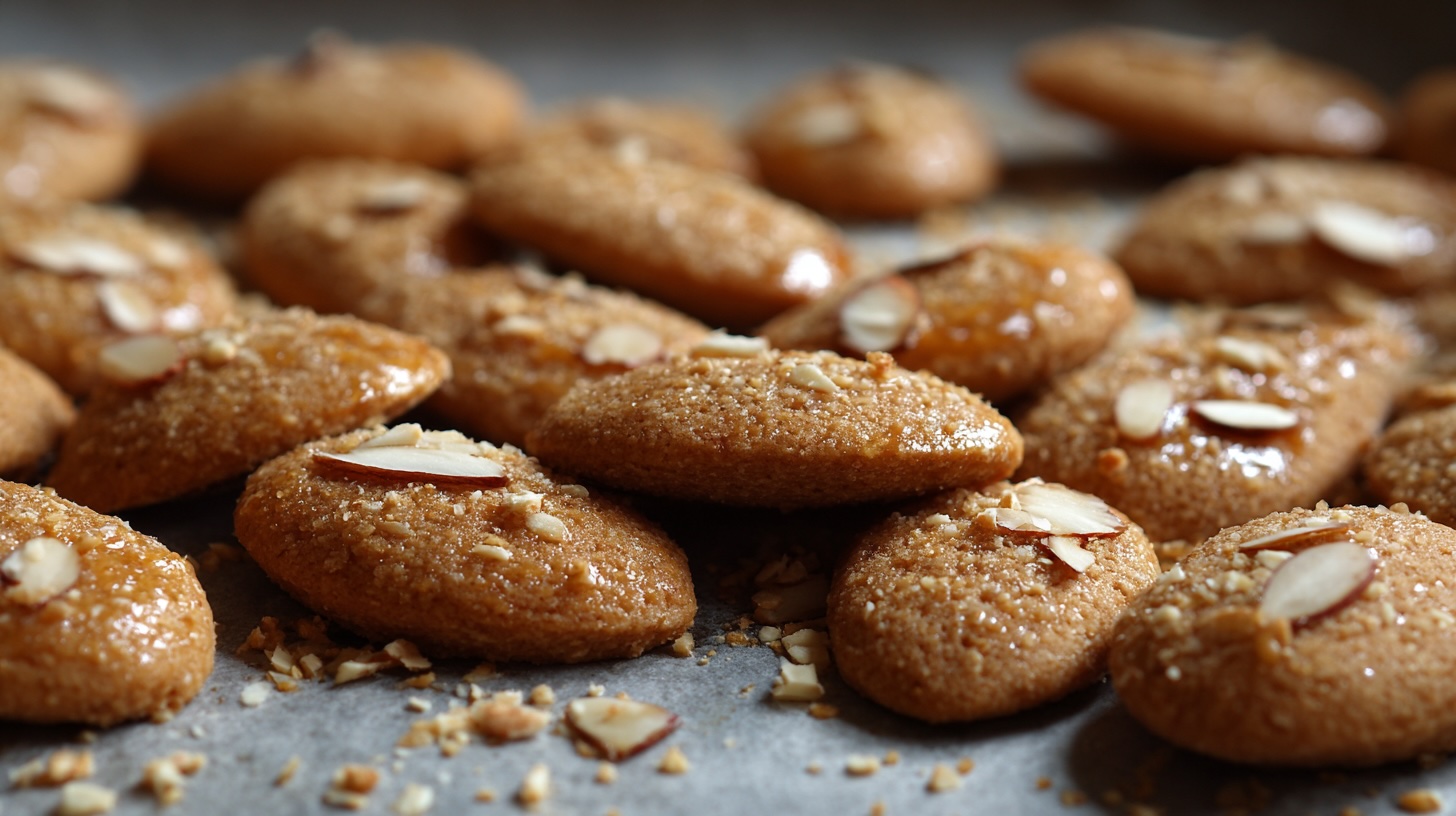Bakewell Pudding: The Deliciously Confusing Derbyshire Classic
Bakewell Pudding is one of those great British culinary mysteries wrapped in a golden, buttery crust. Not to be confused with the Bakewell Tart (which it inevitably always is), this gooey, jam-laden delight has been charming sweet-toothed pudding lovers for centuries. But where did it come from? And why does it keep causing arguments? Get yourself a cup of tea and settle in—this one’s a story worth eating.
A Happy Baking Accident (Probably)
Like many great British recipes, Bakewell Pudding wasn’t so much invented as it was the result of someone not following instructions. The most popular story goes like this: in the 19th century, a cook at the White Horse Inn in Bakewell was attempting to make a jam tart. Instead of mixing eggs and sugar into the pastry as intended, she poured it over the top of the jam and chucked it in the oven. Miraculously, what emerged wasn’t a ruined mess but a gloriously rich, almond-scented pudding with a crisp top and a soft, jammy centre. Thus, Bakewell Pudding was born, and the town of Bakewell has been clinging to this happy accident ever since.
Over time, local bakers embraced this mistake, refining the technique and adding their own touches. Some introduced variations in the jam, experimenting with blackcurrant, strawberry, and even apricot. Others tweaked the almond topping, adjusting the consistency and sweetness. The pudding quickly became a symbol of the town, a dessert proudly representing Bakewell’s baking heritage.
Pudding vs Tart: The Never-Ending Debate
If you ever find yourself in Derbyshire, avoid the Bakewell Tart vs Bakewell Pudding argument unless you have a few hours to spare. The pudding, a much older creation, is made with flaky pastry, raspberry jam, and an eggy, almondy topping that’s closer to a set custard. The tart, on the other hand, is the more famous offspring—a sweet shortcrust pastry filled with jam, frangipane, and often topped with icing and a glacé cherry. The tart is what you’ll find in every supermarket, but the pudding? That’s what you get when you visit Bakewell itself. If you value your life, don’t mix them up when talking to a local.
The debate extends beyond Derbyshire. Food historians argue about which version came first and what truly defines an authentic Bakewell Pudding. Some insist the tart is simply a commercialised version made more accessible to the masses, while others claim the pudding’s original form has evolved so much that neither dessert can be truly definitive. Regardless, both versions continue to thrive, offering sweet satisfaction to those on either side of the argument.
Regional Twists and Variations
Although Bakewell lays claim to the original, variations of this buttery beauty have cropped up elsewhere. Some versions swap out raspberry jam for strawberry or blackcurrant, while others play with the almond mixture by adding a splash of brandy or rum. And then there are those who veer dangerously close to the tart territory, making the topping more cakey and less custardy. But at the heart of it, a proper Bakewell Pudding should always have that glorious contrast: crisp pastry, sticky jam, and a silky, almond-rich filling.
In some parts of Britain, bakers have experimented further, incorporating citrus zest or even chocolate into the mix. A few modern interpretations feature a pastry shell infused with spices like cinnamon or nutmeg, enhancing the warmth of the pudding’s flavour. International variations have also begun emerging, with food enthusiasts across the world adapting the recipe to local tastes.
What to Drink With It?
Tea, obviously. A strong, no-nonsense builder’s brew is the classic choice, cutting through the richness like a good British beverage should. But if you’re feeling a bit more decadent, try a glass of Amaretto—its sweet almond notes are a perfect match. Fancy something more refreshing? A dry cider or even a light sparkling wine brings a lovely contrast to all that buttery goodness.
For those who prefer non-alcoholic pairings, a creamy hot chocolate can create a delightful balance, complementing the nutty depth of the pudding. Coffee lovers might also enjoy a rich espresso or cappuccino, their bold flavours standing up to the dessert’s sweet and buttery profile.
What Else to Eat With It?
Bakewell Pudding is glorious on its own, but a little something on the side never hurts. A dollop of thick clotted cream takes the indulgence up a notch, while a scoop of vanilla ice cream turns it into the perfect summer pudding. If you want to go full-on British, serve it warm with custard—because, let’s be honest, custard makes everything better.
Some adventurous eaters enjoy Bakewell Pudding as part of an afternoon tea spread, alongside scones, finger sandwiches, and other quintessentially British treats. Others take it a step further, incorporating it into elaborate dessert platters featuring caramelised nuts, fresh berries, or even a drizzle of honey.
The Bakewell Experience
If you ever find yourself in the charming town of Bakewell, make a pilgrimage to one of the bakeries still churning out this historic pudding. The Old Original Bakewell Pudding Shop is perhaps the most famous, but there are plenty of places eager to sell you their own version. And while you’re there, pick up some locally made jams to recreate the magic at home.
Bakewell itself is a picturesque town worth exploring, offering more than just pudding. Wander along the River Wye, browse quaint shops, and soak in the town’s history before tucking into a warm slice of its iconic dessert. Local festivals often feature Bakewell Pudding as a highlight, drawing in visitors from far and wide.
Bakewell Pudding Recipe
If you can’t make it to Bakewell anytime soon, fear not—you can whip up a perfectly respectable version in your own kitchen.
Ingredients
- 1 sheet of ready-made puff pastry
- 3 tbsp raspberry jam
- 2 eggs
- 1 egg yolk
- 110g unsalted butter, melted
- 110g caster sugar
- 110g ground almonds
- ½ tsp almond extract (optional, but recommended)
Method
Preheat your oven to 190°C (170°C fan). Roll out your puff pastry and press it into a greased pie dish. Spread the raspberry jam evenly across the base—don’t be shy with it.
In a bowl, whisk together the eggs, egg yolk, melted butter, sugar, and ground almonds until smooth. Stir in the almond extract if using. Pour this mixture over the jam, making sure it’s evenly spread.
Pop it in the oven and bake for around 30–35 minutes, or until the top is golden and slightly firm to the touch. It should have a lovely wobble in the middle—think set custard, not sponge.
Let it cool slightly before serving, then slice and enjoy with your chosen accompaniment (cream, ice cream, custard—or all three if you’re feeling rebellious).
And there you have it: Bakewell Pudding, a dessert born from a kitchen mistake but loved ever since. Whether you stick to tradition or add your own twist, one thing’s for sure—it’s a pudding worth arguing about.



